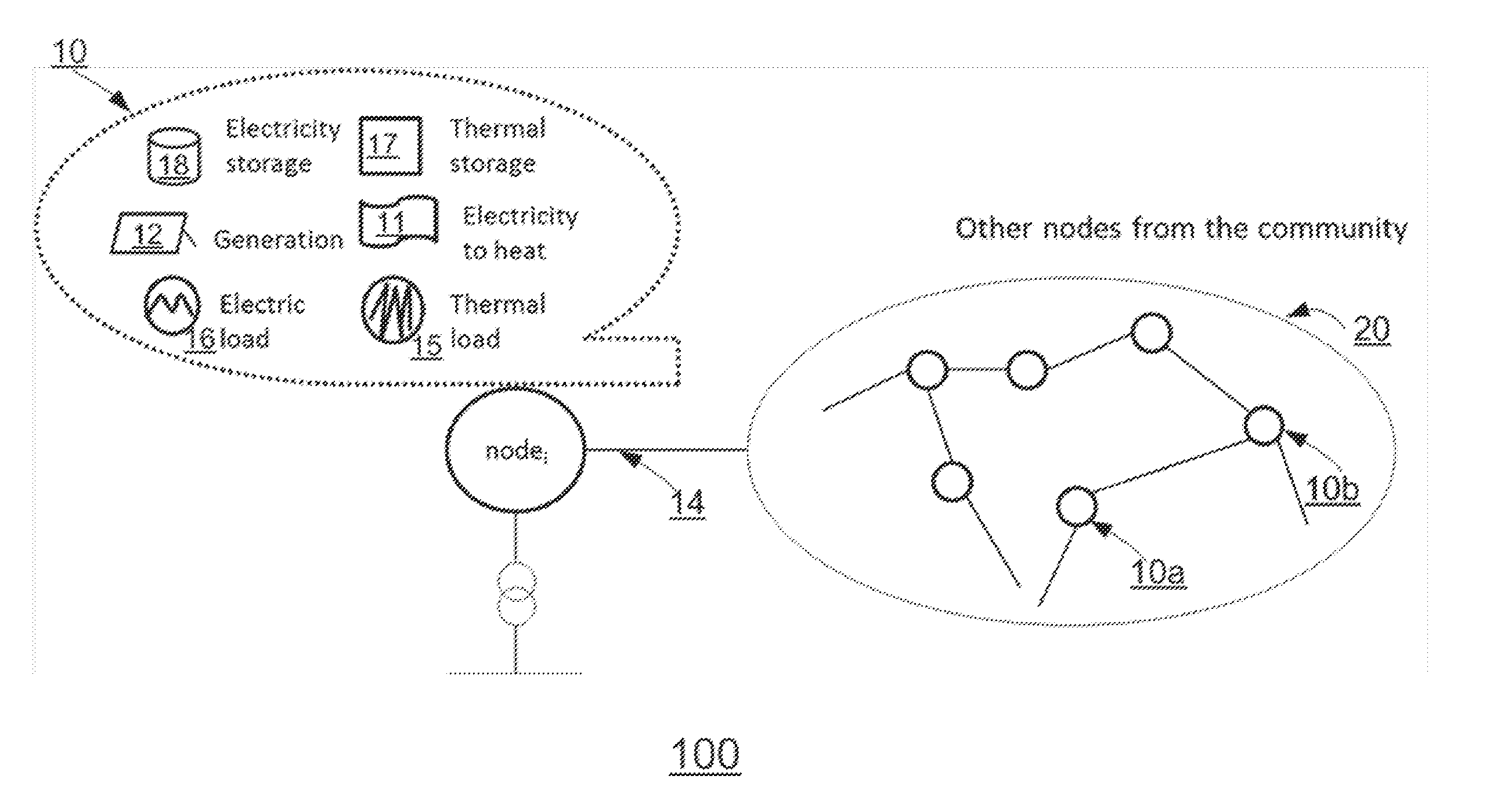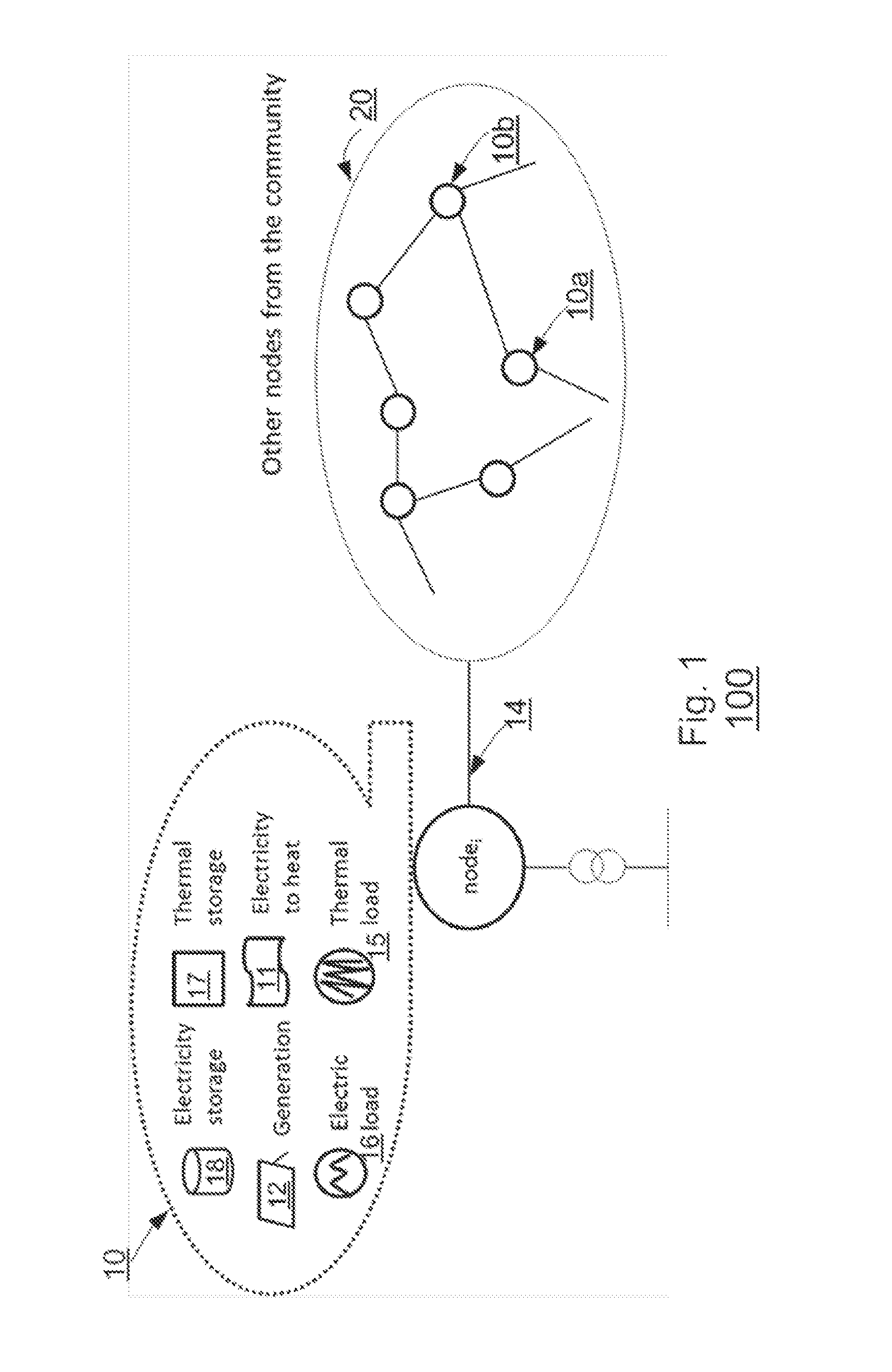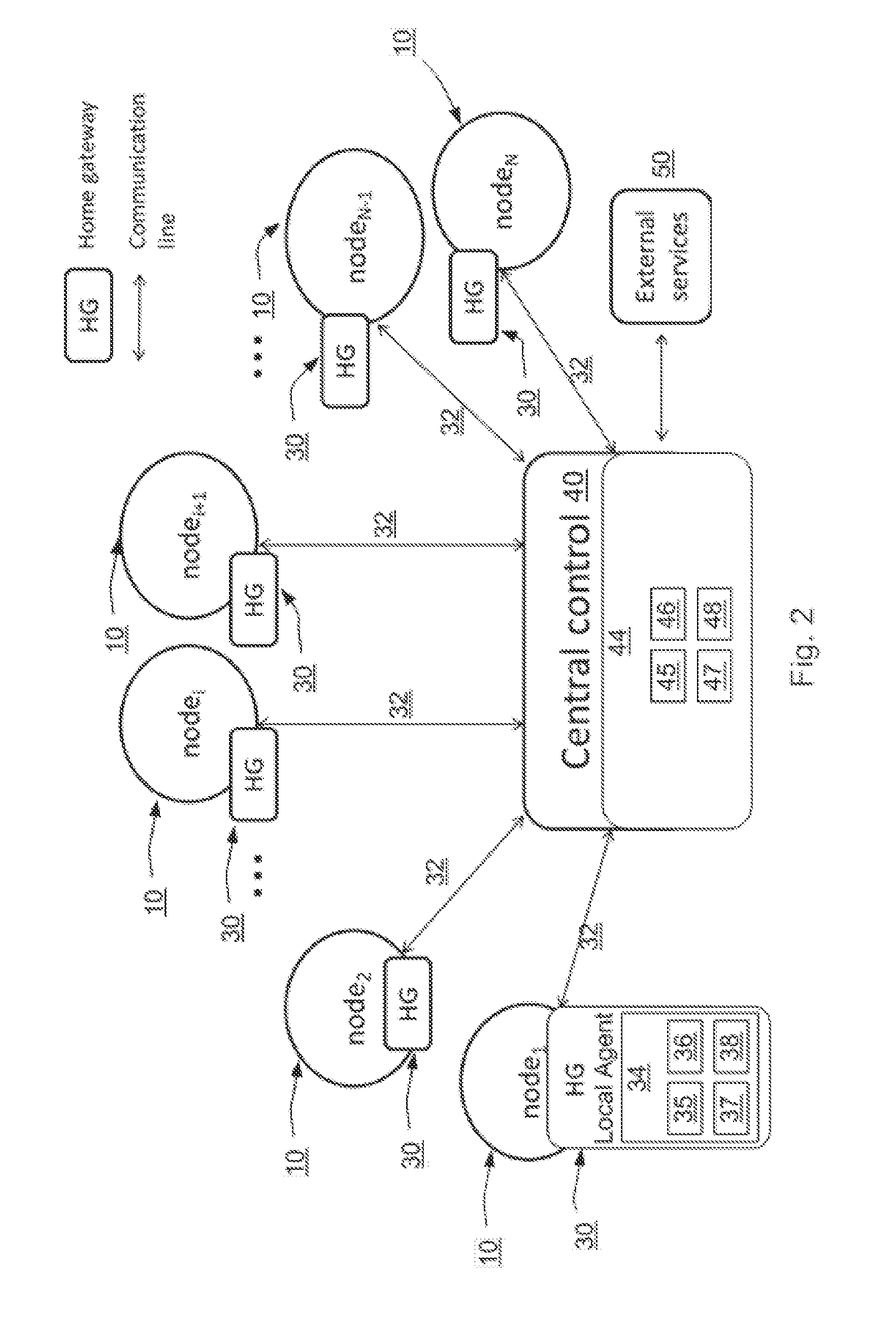Collaborative balancing of renewable energy overproduction with electricity-heat coupling and electric and thermal storage for prosumer communities
a technology of renewable energy and cooperative balancing, applied in the direction of process and machine control, instruments, computer control, etc., can solve the problems of grid stability problems, the significant difference between demand and supply cannot be completely mitigated, and the discrepancy between demand and generation can become much more sever
- Summary
- Abstract
- Description
- Claims
- Application Information
AI Technical Summary
Benefits of technology
Problems solved by technology
Method used
Image
Examples
Embodiment Construction
[0015]The following summarizes the assumptions according to an embodiment of the present invention, generalizing the concepts of household with the term energy node. The community represents all nodes (nodei) participating in an electric system 100, as illustrated in FIG. 1.
[0016]Referring to FIG. 1, the structure of the energy node 10 includes power generation equipment 12 (for example, photovoltaic (PV) panels or wind turbines), electricity storage 18 (for example, batteries or capacitors), and power transmission equipment 14 (for example, cables and electrical connectors) from the power generation equipment 12 for use in handling its own power load 16 and for transfer to the other nodes 10a, 10b in the community 20 or to an energy producer or distributor. The energy node 10 further includes electrical heat-generating equipment 11 (herein meaning any equipment that converts electricity to heat, for example, electric heating generators, electric boilers, and heat pumps), heat stora...
PUM
 Login to View More
Login to View More Abstract
Description
Claims
Application Information
 Login to View More
Login to View More - R&D
- Intellectual Property
- Life Sciences
- Materials
- Tech Scout
- Unparalleled Data Quality
- Higher Quality Content
- 60% Fewer Hallucinations
Browse by: Latest US Patents, China's latest patents, Technical Efficacy Thesaurus, Application Domain, Technology Topic, Popular Technical Reports.
© 2025 PatSnap. All rights reserved.Legal|Privacy policy|Modern Slavery Act Transparency Statement|Sitemap|About US| Contact US: help@patsnap.com



